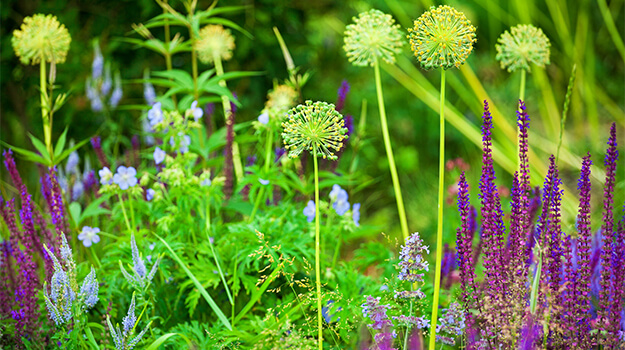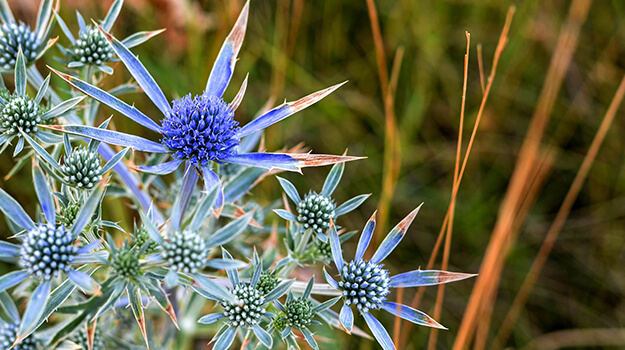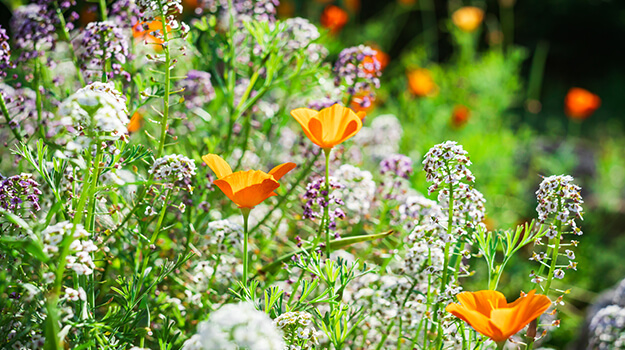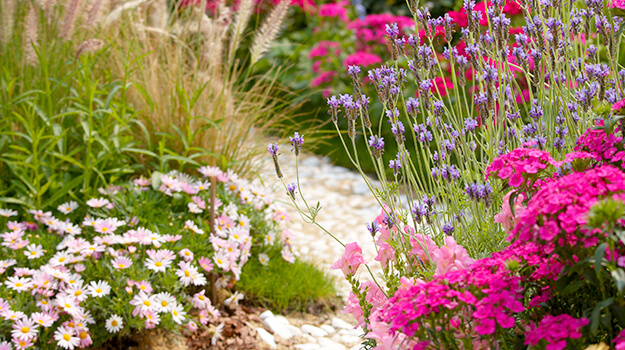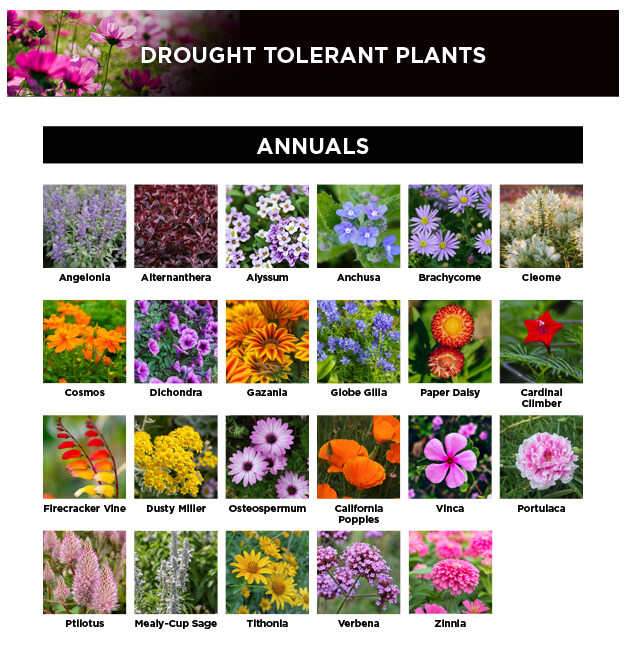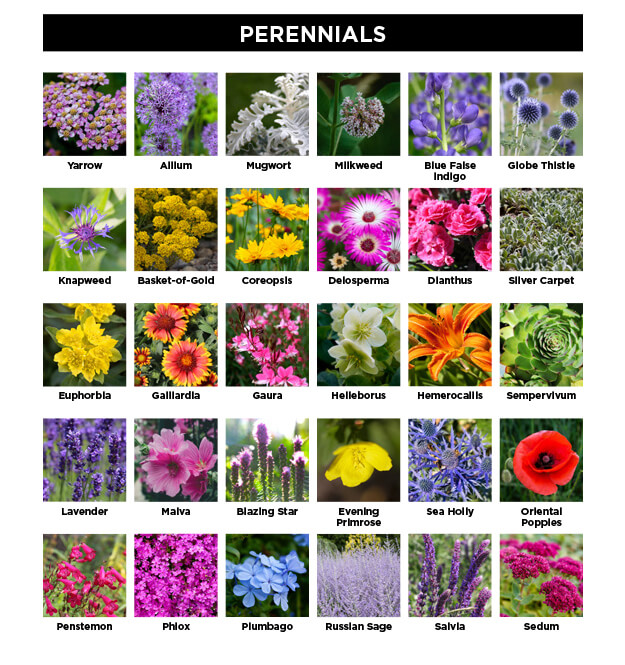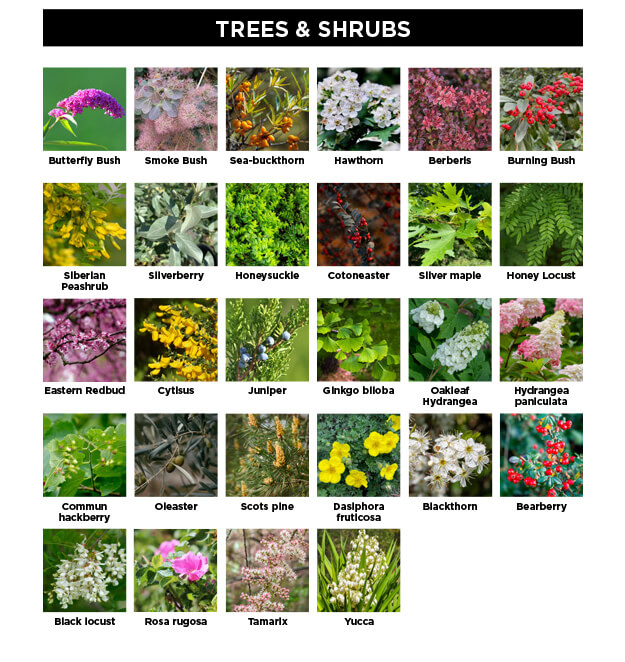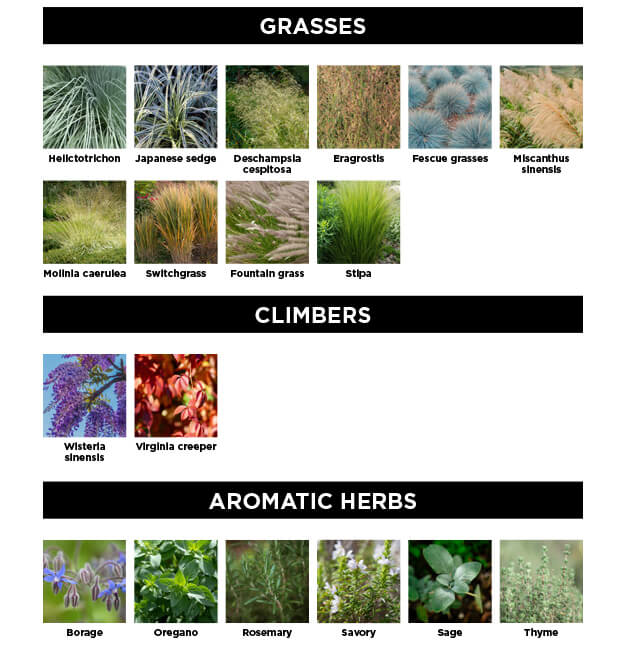How to deal with climate change
Dry spells during summer are considered perfectly normal. Nothing new there. But what is different recently is the frequency of periods of extreme heat and dry periods that last until fall. In many communities, there are more lawn watering bans and water restriction periods.
Confronted with these realities, gardeners are starting to realize that there is a need to shift their approach. We need to understand that we can no longer ignore drought and heat stress and its impact on gardens.
Not all “gravel and yuccas”
In the past, gardeners have been more focused on aesthetic qualities and light requirements than on watering needs. There is a misconception out there that growing low-water plants means that you end up with gravel beds with yucca plants.
Not true. By carefully selecting a variety of drought-tolerant plants with different textures, colours and heights, you can create a stunning landscape that evolves with the seasons and that can add depth and character to your garden.
What makes plants drought-tolerant?
Drought-tolerant plants have adapted characteristics that protect them from the elements. Some have fine hairs on the leaves that give them a silver or grey surface. The fine hairs reflect light and heat.
Many have smaller or narrow leaf sizes to minimize the amount of exposed leaf surface. Others have evolved by having thicker leaves, such as the leaves of sedum or succulents.
A big adaptation common in most of the drought-tolerant perennials and shrubs is their ability to develop a deep or large fibrous root system, one that can reach down deep into the soil to collect water and store it for future use.
Note: You will still need to water these types of plants for the first year until they become established and develop the necessary deep roots.
Consider different light requirements
An important factor in selecting plants should be around the available sun or shade. Although drought-tolerant plants can grow in full sun, not all gardens are in total sunny locations.
Choose plants that are suited for your conditions. Check the label on the plants for their respective designations: full sun (6 hours of late morning/afternoon sun), partial shade (4 hours of sun) and full shade (less than 4 hours of morning sun).
Plants that are growing in their preferred location are more likely to be healthy plants.
Drought tolerance and water-saving techniques
Beyond incorporating these plants in your garden, you should try to maximize water usage by considering water-saving techniques, such as mulching beds, installing drip irrigation systems and harvesting rainwater.
Water only in the early morning or evening to reduce the chance of evaporation in mid-day full sun.
Having garden plants that require less water can also be beneficial for cottage gardens that might be left unattended for extended periods of time.
For more information, read: How to Save Water in the Garden
Here is a list of drought-tolerant plants to help you imagine your future garden…
To download or print the list, click here.

